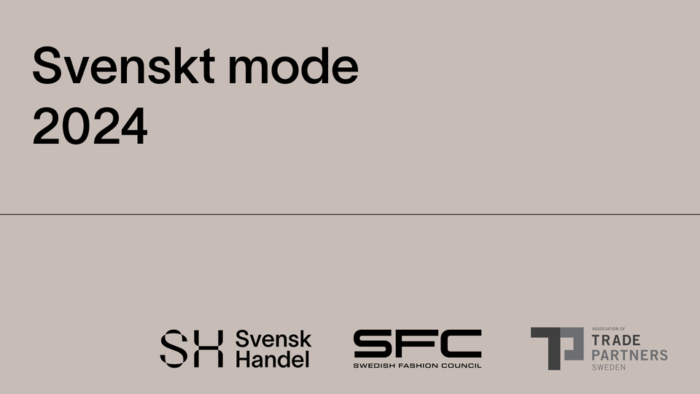
Sweden has a world-class fashion industry. New figures now demonstrate the industry’s role as an important societal actor. This applies both to its role as an employer and its contribution to tax revenues, as well as driving the green transition through increased digitalization.
The Swedish fashion industry’s contribution to society should not be underestimated. Swedish fashion employs a total of 44,000 people and generates 1 out of every 100 tax kronor. In 2022, the industry accounted for 0.7 percent of GDP and contributed 21 billion kronor to public finances. This means that the fashion industry’s tax revenues equal the cost of employing 42,000 nursing assistants in Sweden.
“We should be proud of the Swedish fashion industry, which consists of both larger well-known companies operating worldwide and smaller retail businesses creating significant value in local communities. What unites them is their substantial societal contribution. There is no doubt that Swedish fashion constitutes a central part of Swedish commerce,” says Sofia Larsen, CEO of Swedish Trade Federation.
With increasing digitalization and globalization, more and more Swedish fashion companies have successfully ventured beyond Sweden’s borders to grow and reach their full potential. This is evident in the report, which shows that the Swedish fashion industry’s exports have doubled since 2016, now amounting to 42 billion kronor. This also creates employment opportunities contributing to common welfare. An estimated 12,000 Swedish jobs are generated by the fashion industry’s exports.
The Swedish fashion industry’s global footprint is even larger than the figures suggest. Through foreign subsidiaries and branches, Swedish fashion companies sell goods worth hundreds of billions of kronor annually.
“The Swedish fashion industry’s creativity and entrepreneurship with a sustainability focus contributes to an important part of the global transformation. We in the industry actively work for collaboration within the fashion industry in the EU and internationally through business networks such as the European Fashion Alliance. This is to strengthen Swedish companies’ competitiveness and promote Swedish values and innovations,” says Helena Waker, Trade Partners Sweden and Stockholm Fashion District.
The fashion industry has long embraced technological development, with many companies at the absolute forefront. Despite a noticeable decrease in the number of stores in Sweden, productivity has increased. This is due to an increased focus on AI among other things, which affects the fashion industry in everything from design and purchasing to marketing and shopping experience. Another example is RFID and digital product passports, which are important contributions to ensuring more sustainable commerce going forward.
“The fashion industry is beginning to see positive effects from several of the ongoing changes the industry is undergoing, where we see new business models emerging, an increasing second-hand market, and technological innovation contributing to a more dynamic and sustainable fashion industry,” says Jennie Rosén, CEO of Swedish Fashion Council.